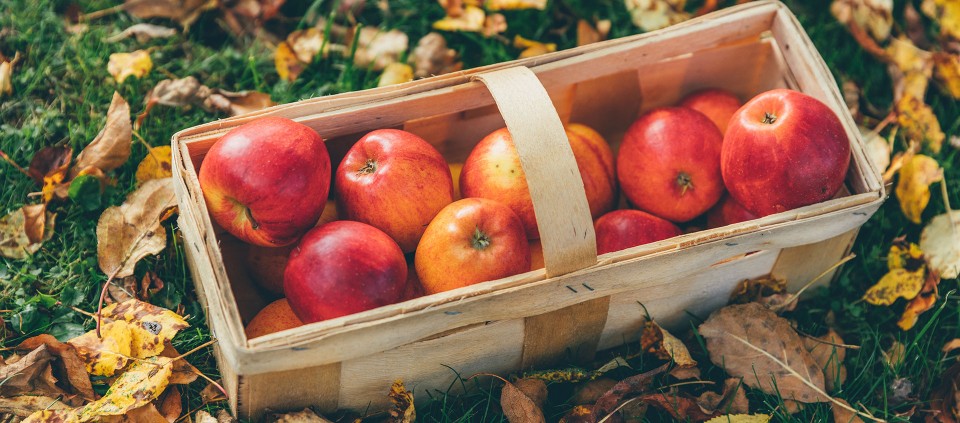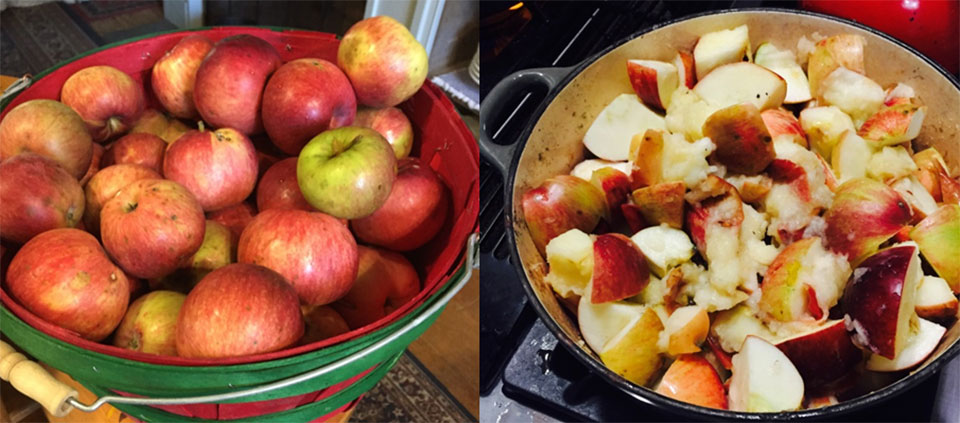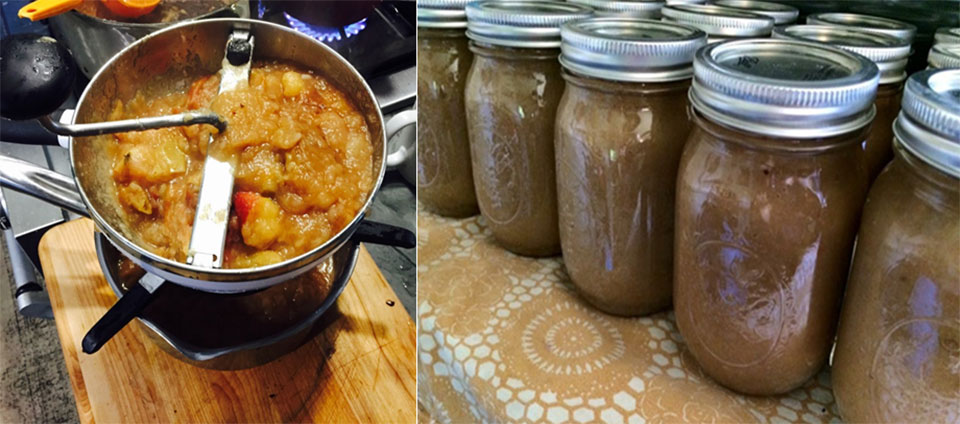A Is for Apple…and Ayurveda

There’s no mystical secret to the Ayurvedic philosophy of apples. But Ayurveda recommends eating seasonally so, in the fall, if you live where apples grow, eat apples. Lots of them.
I'm Erin Casperson, the Dean of the Kripalu School of Ayurveda at Kripalu Center for Yoga and Health, the nation's leading yoga center in North America. When I was a teenager, my family lived right next to an apple orchard. We had three trees on our property that grew apples with spots and worms, which my mom made into applesauce, apple pie, and apple crisp. Watching her make these for so many years is in my cells, and I have continued these practices into adulthood. Today, I have an apple tree in my back yard that is about 100 years old and seems to be on its last legs. The last blast of apples we got from it was in the fall of 2015. But I still eat local apples from farm stands, farmers markets, and the Kripalu apple orchard.
In Ayurvedic terms, apples are cold and dry. This is the perfect antidote for hot and humid summers. That’s the beauty and intelligence of eating seasonally: The natural world provides for us the medicine we need in each season. This is a call to care for our plants and planet, to continue this essential relationship.
Because apples are dry and mostly astringent, they can increase vata. If you tend toward gas, bloating, or constipation, a raw apple might not be your jam. For vata types who love apples but hate constipation, cooking them makes them easier to digest. If you have more pitta in your system, with excess heat and strong digestion, apples are amazing. For kapha types, the astringency of apples (especially Granny Smiths) soaks up excess fluid in the body. (Don't know your dosha? Take our quiz.)
Apples are also loaded with pectin, a type of fiber that feeds good gut bacteria. Research suggests that, because of pectin, apples may have a protective effect against obesity, type 2 diabetes, and heart disease.
For a quick breakfast, cut one or two apples into chunks, place them in a small saucepan over medium heat, add an inch of water and ½ teaspoon Sweet Spice Blend, cover, and cook for 10 to 15 minutes, or until soft. Once they’re cooked, pour into a bowl and top with a teaspoon of ghee. You can also take them to work in an insulated thermos.
If you went apple picking, came home with two bushels, and have no idea what to do with them all, try making applesauce. It is really easy, a little labor intensive, and so rewarding. Inspired by my mom, I have been making applesauce on and off for years. She would freeze it, but I prefer going the old-fashioned route and canning my applesauce.
You’ll need a food mill, food processer, or Vitamix; Mason jars with two-piece lids, and a jar lifter.
First, cut and core the apples; three pounds of apples makes about a quart of applesauce. No need to peel them if you plan to use a food mill, but you will want to peel then if you’ll be using a food processor or Vitamix.

Place in a large saucepan. Add enough water so that they don’t stick to pan as they cook—usually one or two inches, but keep an eye on it.
Add Sweet Spice Blend to taste. Cook over medium heat until soft, stirring occasionally.
Once they are cooked and soft, carefully place apples in food mill, food processor, or Vitamix. If you’re using a food processor or Vitamix, allow apples to cool before processing.

Once puréed, ladle applesauce into Mason jars, leaving a half-inch of space at the top of the jar (fill to the curve of the jar). Using the jar lifter, place the two parts of the lid on the jars. Carefully place jars in a pot of boiling water that covers the jars by two inches, and boil for 20 minutes.
Carefully remove from water with the jar lifter. Place jars to cool on a towel on the counter.
When cool, store in a dark place, and enjoy all winter—cold, room temperature, or warmed on the stovetop.
© Kripalu Center for Yoga & Health. All rights reserved. To request permission to reprint, please email editor@kripalu.org.
Erin Casperson, Lead Kripalu Faculty and Director of the Kripalu School of Ayurveda, is passionate about sharing how the ancient practices of Ayurveda can be applied to modern-day living.
Full Bio and Programs